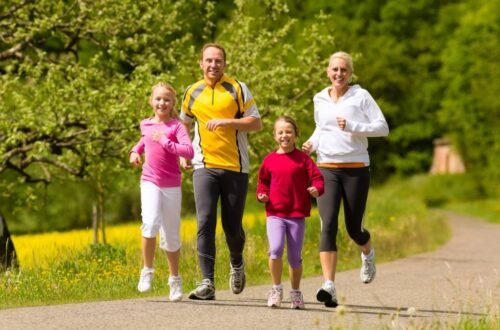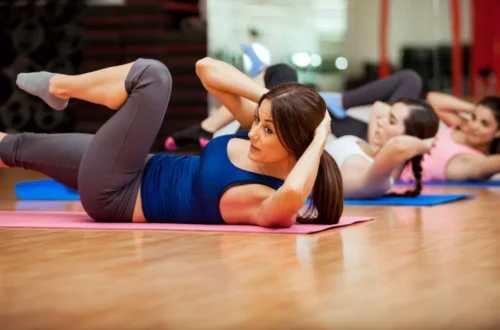Living an active lifestyle doesn’t mean running marathons or spending hours at the gym. It’s about weaving movement into your daily routine in ways that feel natural, sustainable, and even fun. Whether you’re a busy parent, a desk-bound professional, or someone looking to boost their energy, this guide will share practical, actionable tips to help you move more, feel better, and embrace a healthier life. Let’s dive into how small changes can lead to big results, with a sprinkle of humor and real-life stories to keep it relatable.
What Is an Active Lifestyle?
An active lifestyle is all about incorporating regular physical activity into your day-to-day routine to improve physical and mental health. It’s not just about structured exercise but finding opportunities to move, whether through walking, stretching, or even dancing in your kitchen. Think of it as a mindset where movement becomes a natural part of life, not a chore. According to the CDC, adults need at least 150 minutes of moderate activity weekly to stay healthy.
Why Does Being Active Matter?
Physical activity reduces the risk of chronic conditions like heart disease, diabetes, and depression while boosting mood and energy. I remember when I started taking short walks during lunch breaks; my afternoons felt less like a slog and more like a breeze. Regular movement can transform how you feel, and the science backs it up—exercise releases endorphins, those feel-good hormones that make you smile even on a rough day.
Common Myths About Staying Active
Many believe you need a gym membership or hours of free time to live actively, but that’s not true. You don’t need fancy equipment or a perfect schedule. I once thought I had to “go big or go home” with workouts, only to realize a 10-minute yoga session in my living room was just as effective for my mood. Busting these myths opens the door to simple, accessible ways to move more.
Simple Ways to Incorporate Movement Into Your Day
Adding activity to your life doesn’t require a complete overhaul. Small, intentional changes can make a huge difference. Here are some practical ideas to get you started, inspired by real-life habits that have worked for me and others.
Start with Short Walks
Walking is the easiest way to get moving, and it’s free! A 15-minute stroll during your lunch break or after dinner can add up to big health benefits. I started walking my dog a bit farther each day, and soon, those extra steps turned into a habit that left me feeling refreshed. Aim for 7,000–10,000 steps daily to hit fitness goals without stress.
Turn Chores Into Workouts
Household tasks like vacuuming, gardening, or scrubbing floors can double as exercise. I once burned 200 calories just reorganizing my garage while blasting my favorite playlist. Turn on some music, move with purpose, and you’ll be surprised how much you sweat. It’s like sneaking in a workout without even noticing.
Use Stairs Instead of Elevators
Choosing stairs over elevators is a simple way to boost your heart rate. When I worked in a multi-story office, I made it a game to take the stairs two at a time—it felt like a mini victory every day. Even one or two flights daily can improve cardiovascular health over time.
Try Desk Exercises
If you’re stuck at a desk, subtle movements like seated leg lifts or shoulder rolls can keep you active. I used to do chair stretches during long meetings, and it helped me stay focused and less stiff. These micro-movements add up, especially for those with sedentary jobs.
Comparing Active Lifestyle Habits
To help you choose the best ways to stay active, here’s a comparison of popular activities based on time, cost, and benefits.
| Activity | Time Commitment | Cost | Health Benefits |
|---|---|---|---|
| Walking | 15–30 min/day | Free | Improves heart health, boosts mood |
| Home Workouts | 10–20 min/day | Free–Low | Builds strength, enhances flexibility |
| Gym Membership | 30–60 min/day | $20–$100/month | Full-body fitness, professional guidance |
| Group Fitness Classes | 45–60 min/session | $10–$30/session | Social connection, structured workouts |
Walking and home workouts are ideal for beginners due to their low cost and flexibility, while gym memberships or classes suit those craving structure or community.
Pros and Cons of an Active Lifestyle
Pros
- Improved Health: Reduces risk of chronic diseases like diabetes and hypertension.
- Better Mood: Exercise boosts endorphins, helping combat stress and anxiety.
- Increased Energy: Regular movement improves stamina and reduces fatigue.
- Social Benefits: Group activities foster connections and accountability.
Cons
- Time Constraints: Busy schedules can make it hard to prioritize movement.
- Initial Discomfort: Starting new activities may cause soreness or fatigue.
- Cost for Some Options: Gyms or classes can be expensive for some budgets.
Despite these challenges, the benefits far outweigh the drawbacks, especially when you start small and choose activities you enjoy.
Best Tools and Resources for Staying Active
To make your active lifestyle journey easier, here are some top tools and resources to explore, covering transactional intent for those ready to invest in their health.
Fitness Apps
Apps like MyFitnessPal or Fitbit track steps, calories, and workouts, keeping you motivated. I’ve used Strava to log my walks, and the friendly competition with friends pushed me to stay consistent. Many apps offer free versions with premium upgrades for detailed analytics.
Wearable Fitness Trackers
Devices like the Fitbit Versa or Apple Watch monitor activity, heart rate, and sleep. My cousin swears by her Garmin for tracking her daily runs—it’s like having a coach on your wrist. Prices range from $50 to $400, depending on features.
Online Workout Platforms
Platforms like Peloton Digital or YouTube channels (e.g., Yoga with Adriene) offer guided workouts for all levels. I started with free YouTube videos before investing in a subscription, and the variety kept me engaged. Most platforms cost $10–$30/month.
Where to Find Active Lifestyle Communities
Navigational intent is key for those seeking local or online support. Joining a community can make staying active more fun and sustainable.
Local Gyms and Fitness Centers
Search for “gyms near me” on Google Maps or check platforms like ClassPass to find local options. My local YMCA offers affordable classes, from Zumba to swimming, fostering a sense of community. Many gyms provide free trial sessions to test the vibe.
Online Fitness Groups
Platforms like Reddit’s r/Fitness or Strava clubs connect you with like-minded people. I joined a virtual running group during the pandemic, and the encouragement kept me going. Look for groups on social media or apps tailored to your interests.
Meetup Events
Meetup.com lists local fitness events, like hiking clubs or yoga meetups. I attended a local walking group event and made friends who now join me for weekend hikes. Search for “fitness meetups near me” to find events in your area.
People Also Ask (PAA) Section
How Can I Stay Active Every Day?
Incorporate small bursts of movement, like walking, stretching, or dancing, into your routine. Aim for 30 minutes of moderate activity daily, split into shorter sessions if needed. Consistency matters more than intensity, so find activities you enjoy.
What Are the Best Exercises for Beginners?
Walking, bodyweight exercises (like squats or push-ups), and yoga are great for beginners. They require minimal equipment and can be done at home. Start with 10–15 minutes daily and gradually increase as you build confidence.
How Do I Stay Motivated to Be Active?
Set realistic goals, track progress with apps, and reward small wins. I found that treating myself to a coffee after a week of consistent walks kept me motivated. Partnering with a friend or joining a group also boosts accountability.
Can I Be Active Without a Gym?
Absolutely! Walking, home workouts, or even active chores like gardening count. I transformed my backyard into a mini gym with jump ropes and resistance bands. Free resources like YouTube workouts make it easy to stay active anywhere.
Overcoming Common Barriers to Staying Active
Life gets busy, and obstacles like time, money, or lack of motivation can derail your efforts. Here’s how to tackle them with practical solutions.
Lack of Time
Busy schedules can feel overwhelming, but you don’t need hours to stay active. Try 10-minute workouts or walk during phone calls. I started doing squats while brushing my teeth, and it became a quirky daily habit that added up.
Limited Budget
You don’t need a gym to move. Free activities like walking, jogging, or following YouTube workouts cost nothing. I saved money by using household items like water bottles as weights instead of buying dumbbells.
Low Motivation
Motivation ebbs and flows, but building habits helps. Set small, achievable goals and track them. When I felt unmotivated, I’d tell myself, “Just five minutes,” and often ended up doing more because I got into the groove.
The Role of Nutrition in an Active Lifestyle
Exercise alone isn’t enough—nutrition fuels your active life. A balanced diet supports energy, recovery, and overall health.
Eat a Balanced Diet
Focus on whole foods like fruits, vegetables, lean proteins, and whole grains. I noticed a huge energy boost when I swapped sugary snacks for nuts and fruit. Aim for variety to get essential nutrients without overcomplicating meals.
Stay Hydrated
Drinking enough water keeps you energized and aids muscle recovery. I carry a reusable water bottle everywhere—it’s a simple trick that reminds me to sip throughout the day. Aim for 8–10 cups daily, more if you’re very active.
Timing Your Meals
Eating a small meal or snack 1–2 hours before exercise provides energy without discomfort. I learned this the hard way after a sluggish run post-pizza. A banana or yogurt works wonders for a pre-workout boost.
FAQ Section
How many minutes should I be active each day?
Aim for at least 30 minutes of moderate activity daily, as recommended by the CDC. This can be split into three 10-minute sessions, like walking or stretching. Adjust based on your fitness level and schedule.
What’s the easiest way to start an active lifestyle?
Start with activities you enjoy, like walking or dancing, and aim for 10–15 minutes daily. Use free resources like YouTube workouts or local parks. Consistency is key, so build habits gradually.
Are there free tools to track my activity?
Yes, apps like MyFitnessPal, Strava, or Google Fit track steps and workouts for free. Many smartwatches also offer basic tracking without a subscription. Check app stores for user-friendly options.
Can I stay active if I have a sedentary job?
Definitely! Try desk exercises, take walking breaks, or stand during calls. I set a timer to stretch every hour at my desk job, which helped my posture and energy levels.
How do I know if I’m active enough?
Track your steps or activity time using a phone or wearable device. Aim for 150 minutes of moderate activity weekly. If you feel energized and sleep well, you’re likely on the right track.
Final Thoughts
Building a healthy, active lifestyle is about finding joy in movement, not forcing yourself into grueling routines. Start small, celebrate progress, and lean on tools or communities that keep you inspired. Whether it’s a brisk walk, a dance party in your living room, or joining a local fitness group, every step counts. So, lace up your shoes, grab a water bottle, and make movement a part of your story—one fun, sweaty moment at a time.





